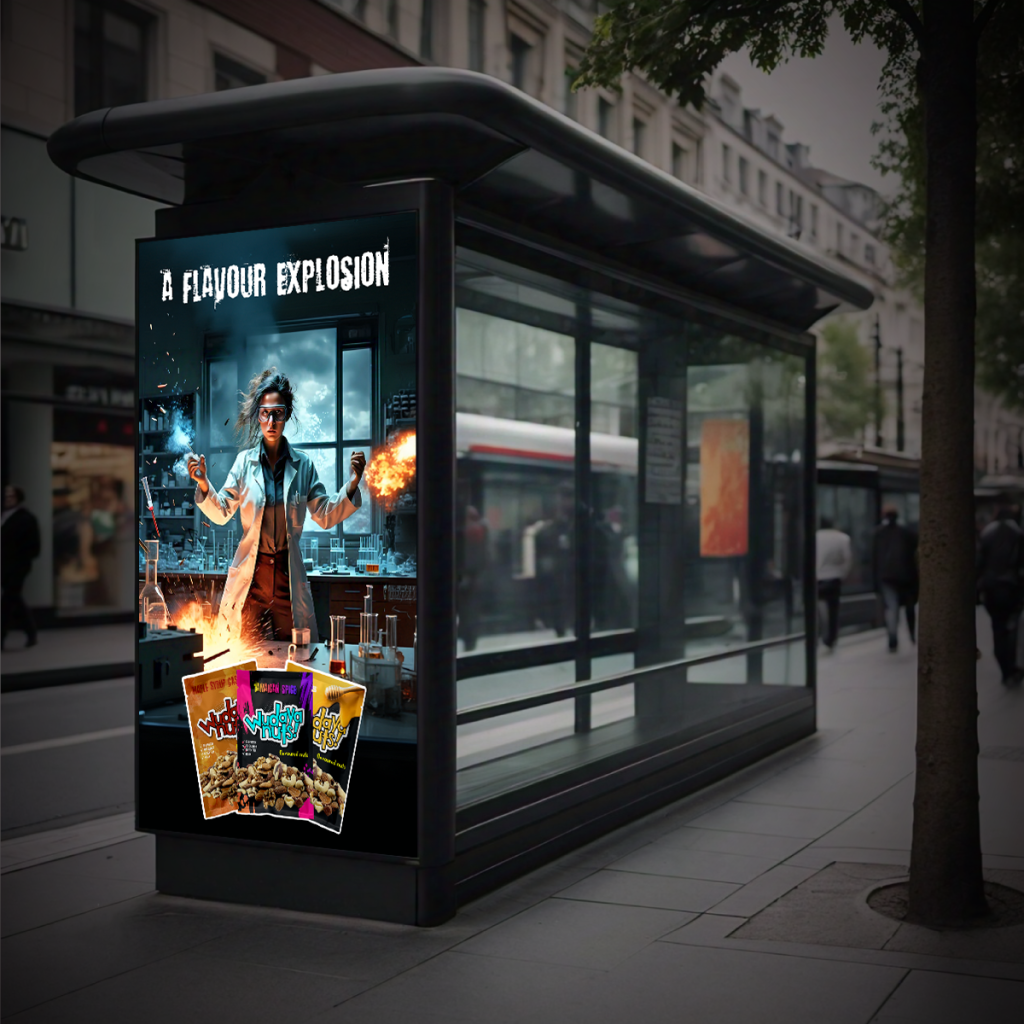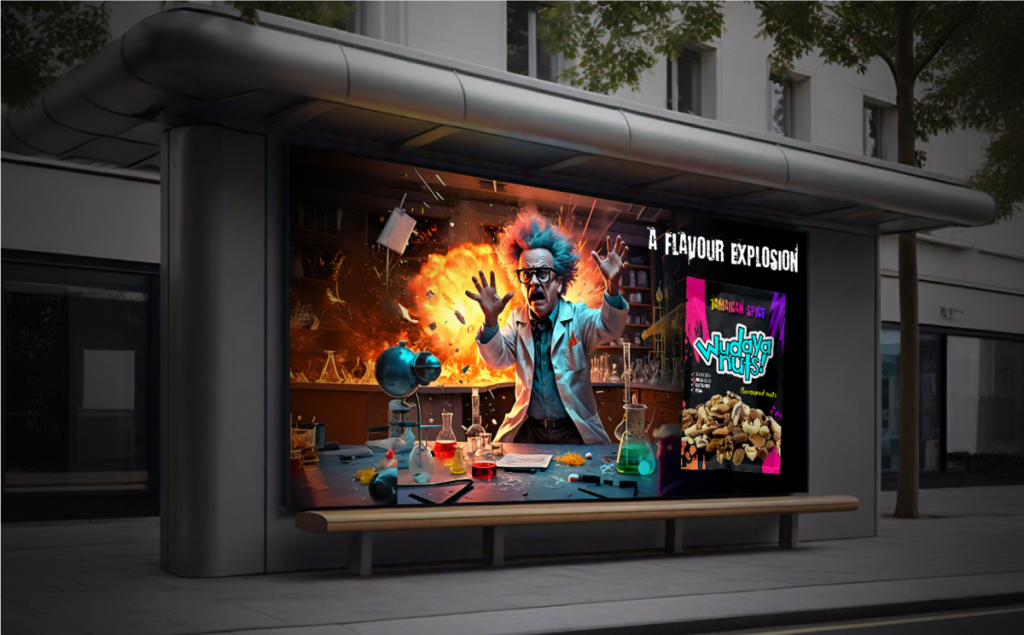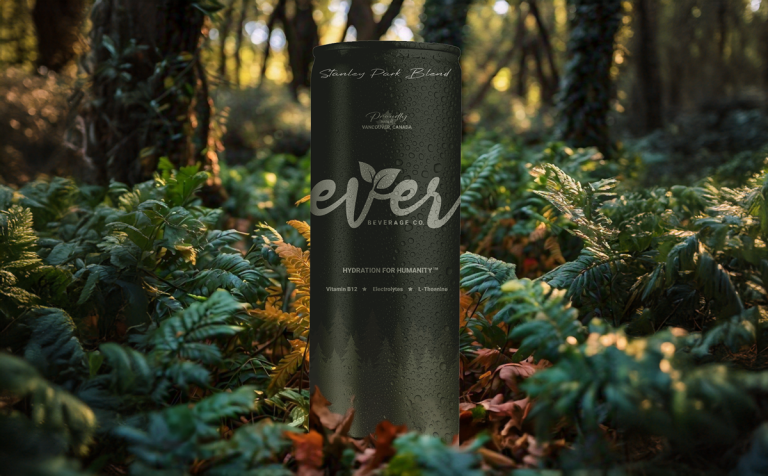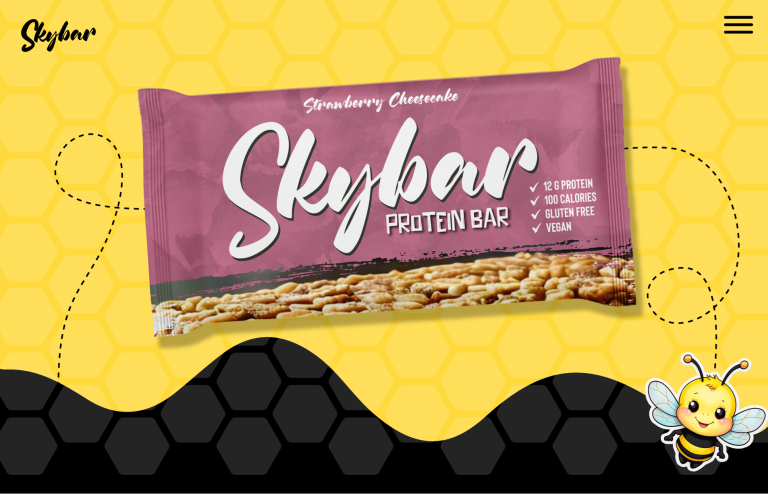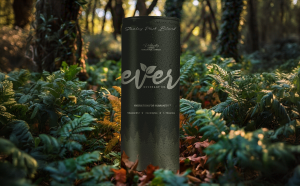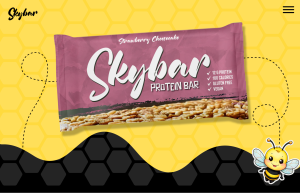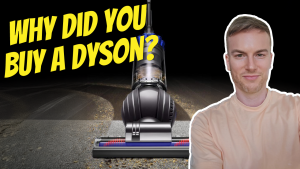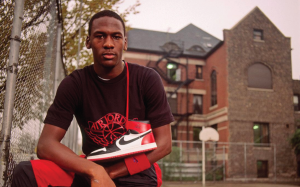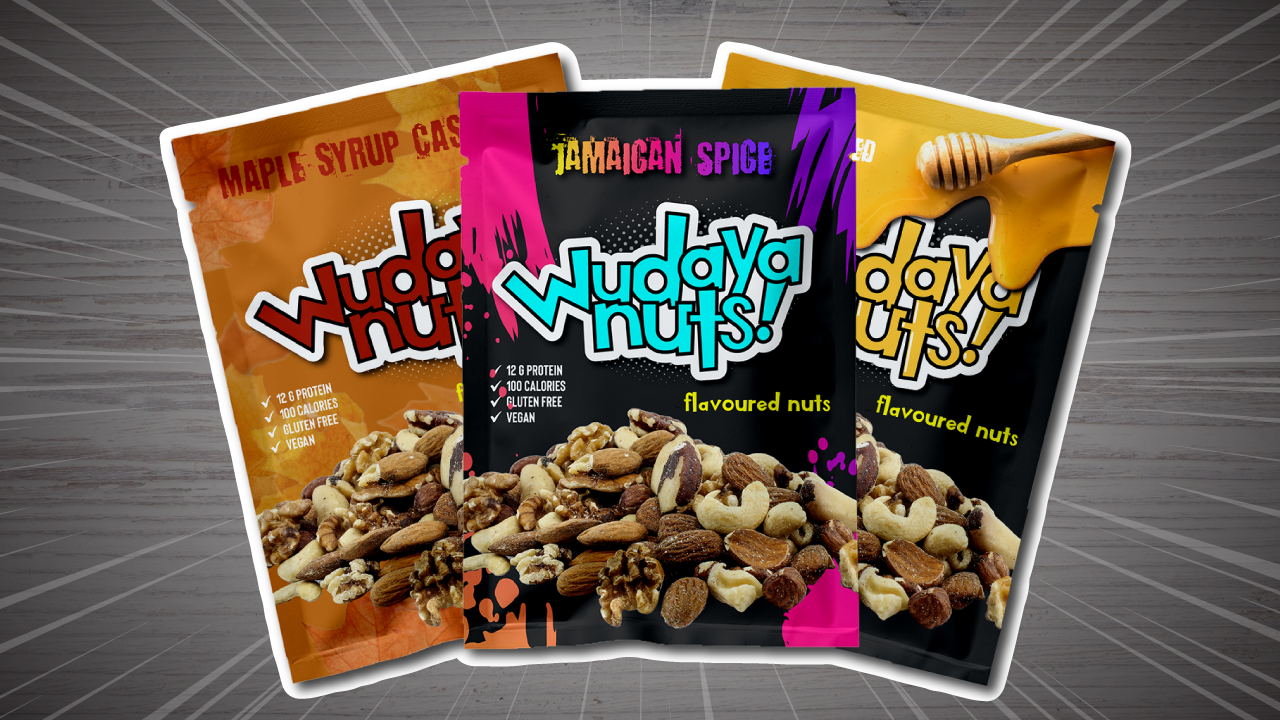
If you're not disrupting, then you're standing still
If you’re not disrupting your category, then you’re standing still in a moving market.
This applies to brands, music, movies, art, fashion, cuisine… when others zig, you should zag. You should always be pushing the boundaries and carving a new path. Otherwise, someone else will. Over time (or sooner than you think), you may become obsolete, irrelevant, a commodity, mediocre… I can keep going.
So here’s the lens through which you should be viewing your brand, and the world: Ask yourself, ‘Are we disrupting our category, or are we the status quo?‘
Think about what:
👉 Liquid Death has done with water
👉 Tesla has done with automotive
👉 W by Jake Paul has done for hygiene products
👉 Feastables has done with chocolate
So if you’re a new brand, or thinking about starting a new brand, that would be the first question I would ask – ‘How can we be disruptive?’
If you can’t, then why bother at all?
We created this series to show you how we think about brand building. When applicable, we take aim at traditionally boring categories to see what, if anything, we can do to disrupt them and make our brand stand out. We’ll apply our expertise, skills, and experience in marketing, branding, design, and creativity. Hopefully you will learn something, be inspired, or even better, hire us!
Disruption Meter

Now, while we’re huge fans of disruption, we recognize that not every category is ripe for disruption, or make it to the level of complete, ghost-pepper annihilation.
In the case of many consumer packaged goods, there may not be much you can do to the form that hasn’t already been done — bars, balls, powders, liquids — it has all been done before.
But, Liquid Death didn’t revolutionize water (or flavoured water), they found disruption through their marketing and branding. Things like storytelling, positioning, naming, logo, packaging, imagery and other design elements, etc. That’s not to say you can’t use the product to be disruptive, however, it will most likely be done through marketing and branding.
We talk a lot about branding and how it is like gravity. The larger the brand, the stronger the gravitational pull. Most, if not all, the brands we buy, and are loyal to, are because we trust them, are familiar with them, or have an affinity for them. This is because as consumers, we have anxiety about the purchases we make. We want to ensure we don’t get ripped off, look foolish, feel stupid, make the wrong decision, have buyer’s remorse, etc.
So to recap:
- Branding helps companies stand out and be disruptive, which is especially important in crowded markets.
- Branding helps attract consumers much like a gravitation pull.
- Branding helps alleviate some of the anxieties consumers have when making purchases.
Therefore, branding is REALLY important to the profitability and longevity of a company.
Understanding what branding is and what makes a brand disruptive is the first step. We can then apply these principles to any brand.
We also need to understand the 4 Cs of branding:
- Company: What are our organizational objectives, and how does our brand support us in achieving them?
- Customer: Who is our target audience, and what are their needs and expectations?
- Competitors: What strategies are our competitors employing, and where can we find opportunities to stand out?
- Context: What broader trends and events are influencing our industry and market?
You can spend months, or years, defining, strategizing, planning… We don’t have months or years. So to keep things simple and consistent in this series, we’ve decided to follow the same 5 steps for each brand concept we create. We’ll first define the product and look for whitespace in the category for how we can be disruptive. As with any brand, we’ll need a name, some branding elements like a logo, colour palette, identity, packaging, and some ads.
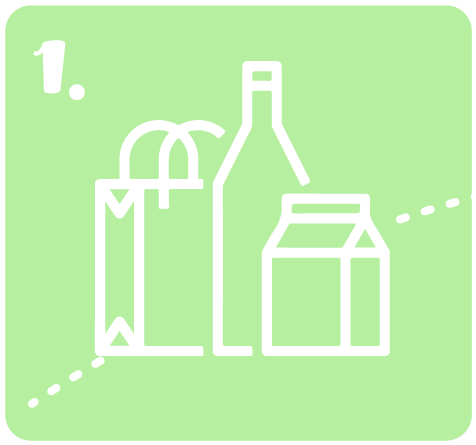
1. Product
2. Name
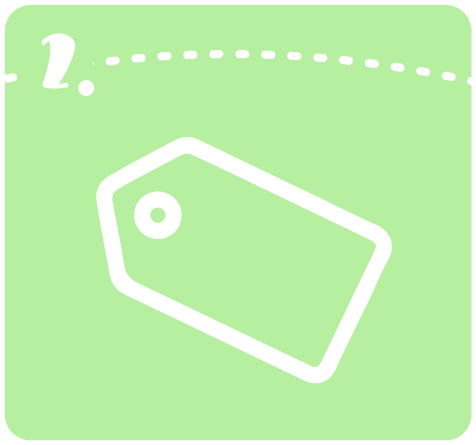

3. Branding
4. Packaging
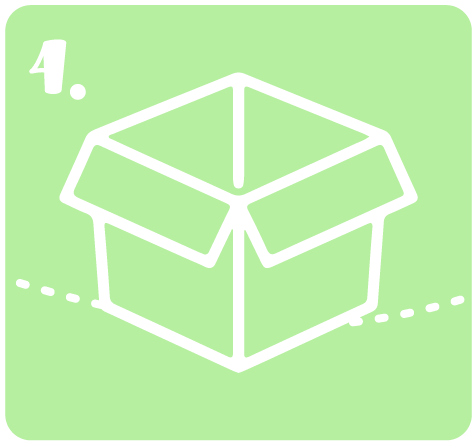
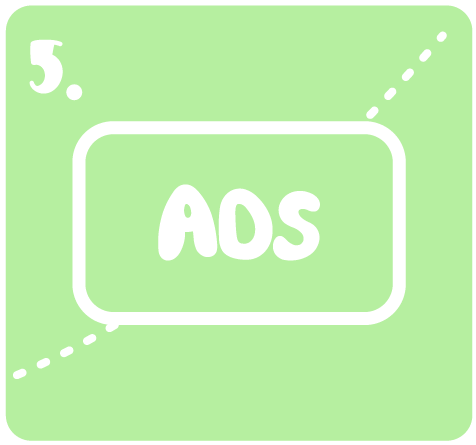
5. Ads
Of course, this is only theoretical and for fun. If it were real, we would spend a lot more time and care crafting personas, developing a brand story and identity, using actual market research / data, spending a lot of time thinking about the product and line expansion, creating unique GTM strategies for launch and promotion, thinking about strategic partnerships, developing our social and content strategy, and a million other things that go into creating and launching a brand.
With that being said, we may need to make some assumptions, or infer what the product may be like.
But, in lieu of all that, this series should give you an idea for how we at Ewanity Marketing think about marketing, product, and branding.
So without further ado, let’s get started!
1. Product
We are going to create a flavoured nut mix snack brand. There are many flavour nut brands out there, but none are fun and creative. Where we will win is in our package design, uniqueness of flavours, sizing, creativity and brand strategy.
Let’s have a look at some of the competition.
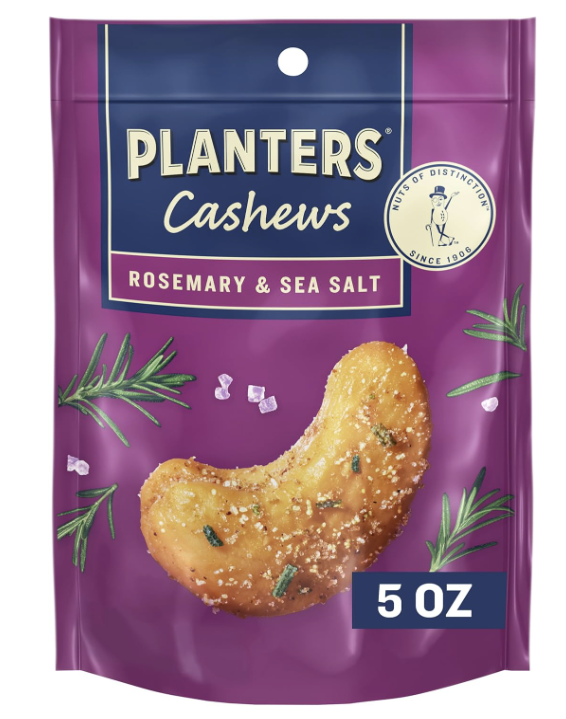
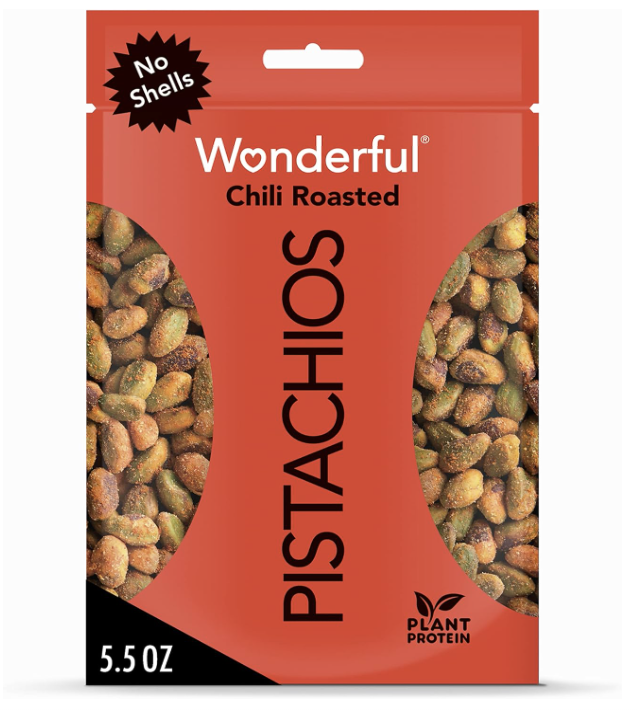
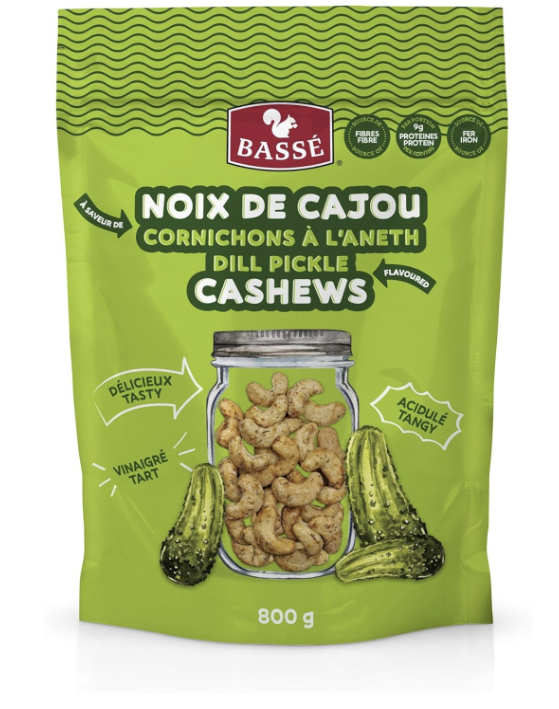
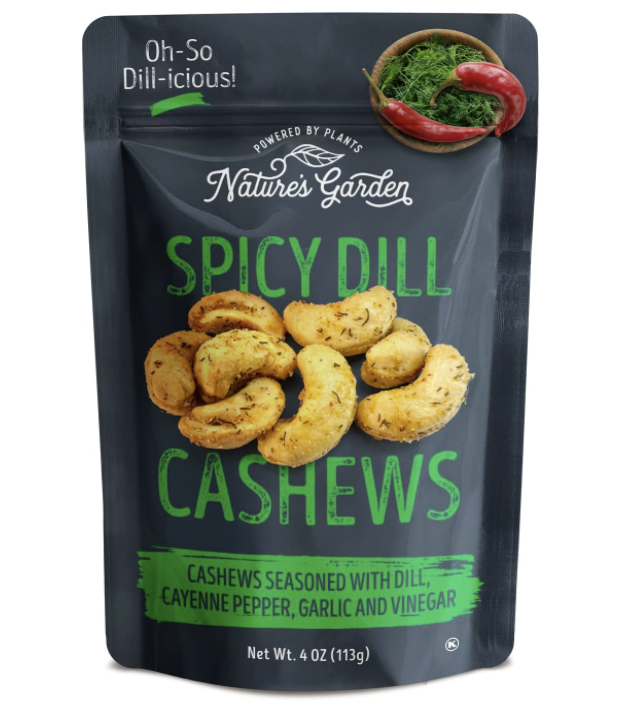
It appears that none of these options are pushing the boundaries in terms of design and creativity. Our packaging and branding, on the other hand will be a lot more fun (in our biased opinion). Our inspiration was 90s Saturday morning cartoon commercial.
Our target consumer, as you will see in some of our ads, is anyone looking for a snack to satisfy a hunger craving. That is someone on the road (e.g. mail carriers), someone on a job site or office worker, a movie goer (either at home or theatre), fitness enthusiasts / athlete / outdoorsy people…
Nuts are inherently high calorie so we won’t position this as a health food brand, but we may want to lean into it being a healthier alternative to snacking (i.e. chips, chocolate, candy) and satisfying hunger cravings as this will likely be sold in convenience stores and gas stations. These stores are notorious for having predominately unhealthy choices: chips, ice cream, sodas, chocolate, and candy.
So, our positioning, branding, and flavours will help us stand out not just in the nut category, but in the on-the-go snack category.
2. Name
We created a name, ‘Wudaya Nuts’, which embodies boldness, fun and playful with a bit of edge. We will offer single packs of mixed, flavored nuts and trail mix. Our brand name is a playful twist on the phrase “What are you, nuts!”, often associated with gripes with people, places, and things in our society that fall outside of the conventional social norms and make you scratch your head: a person taking up two parking stalls, a parkour athlete scaling the side of a building, a crazy neighbour talking loudly in an elevator… any of these could be ripe for creative ideation for social campaigns.
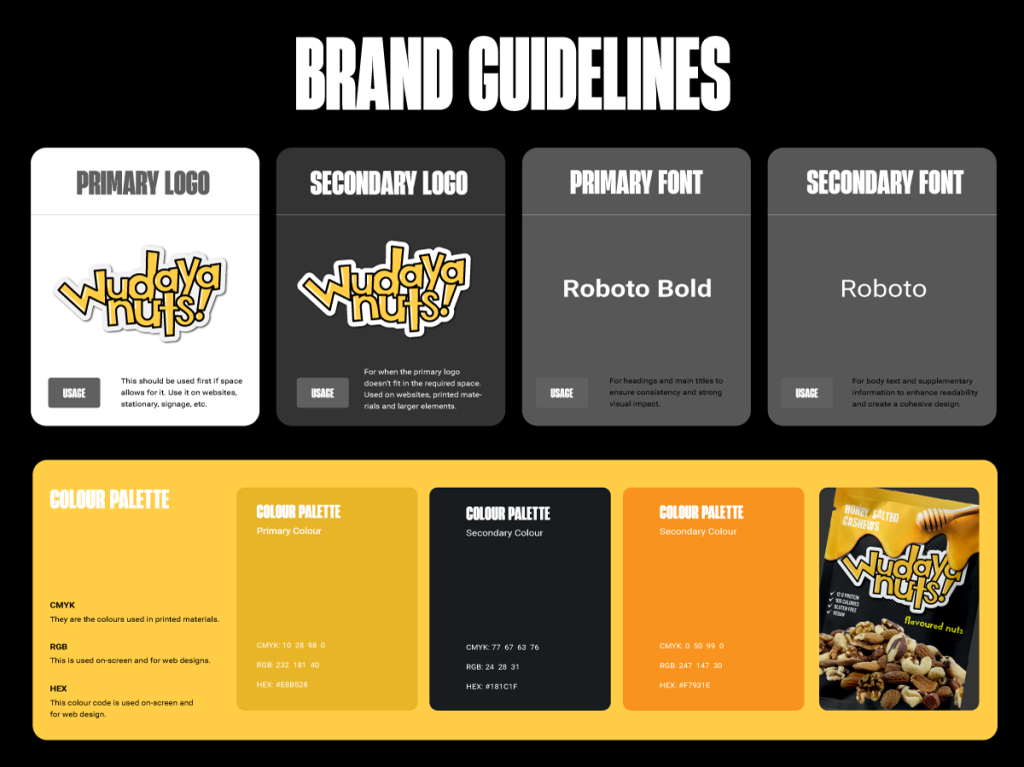
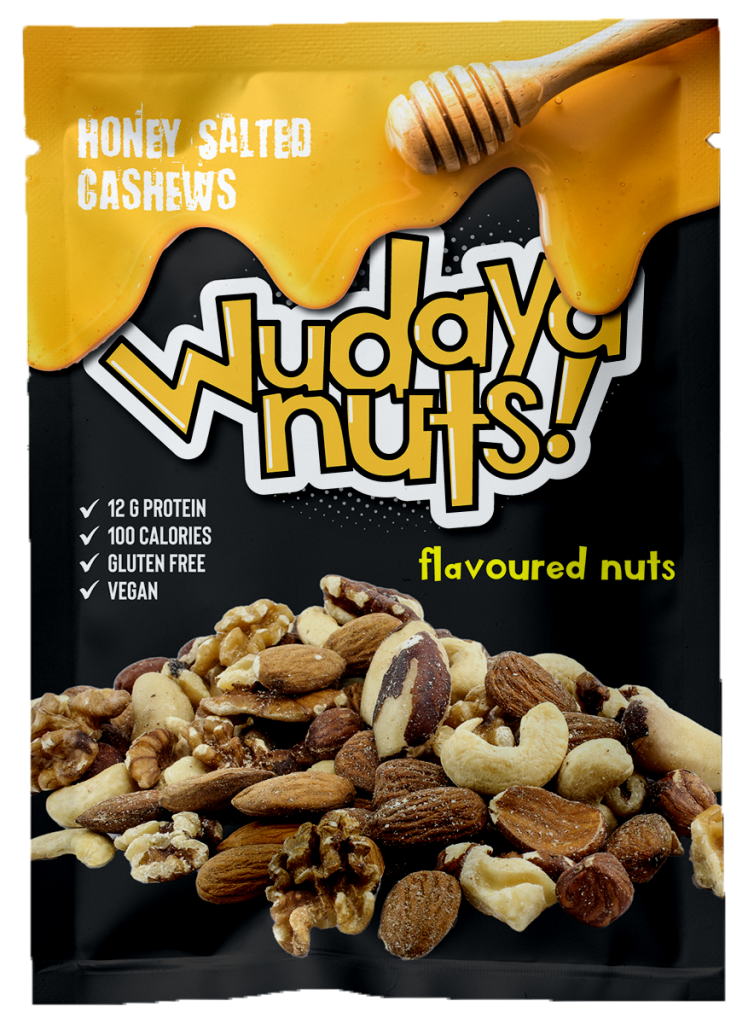
What is a brand manifesto?
A brand manifesto is a detailed declaration of the brand’s purpose, values, beliefs, and aspirations. It often includes the brand’s mission and vision statements.
Its purpose is to articulate the brand’s philosophy and what it stands for, to inspire and rally both internal stakeholders (employees) and external audiences (customers), and to provide a comprehensive understanding of the brand’s broader goals and motivations.
In short, it explains why the brand exists, what it aims to achieve, and how it plans to make an impact. It can include narrative elements, storytelling, and a passionate tone.
Wudaya Nuts! Manifesto
Brand Essence
Wudaya Nuts embodies the essence of fun, adventure, and quality. We provide tasty, convenient, and nutritious snacks that make life’s moments more enjoyable.
Brand Manifesto
At Wudaya Nuts, we believe that snacking should be an adventure. Our mission is to add a dash of fun and excitement to your day with our bold and flavourful nuts and trail mix. We’re not just about snacks; we’re about making every moment count, fueling your fun, and celebrating life’s quirky, playful side. So, grab a pack of Wudaya Nuts and join us on this wild, tasty journey. What are you, nuts? You bet we are, and proud of it!
3. Branding
As discussed, branding is at the heart of this exercise. It’s really important and therefore a natural area of passion and interest for us. If we could spend a little time setting the stage, it’ll be really helpful for us before moving forward.
Too often marketers and business leaders use demographics to define their audience. They say things such as, ‘We’re going to market to kids… or women… or people who make $100,000 per year…’ Then, they create these made up personas of Bob and Nancy who drive a minivan and like to golf and paint on the weekends. They rely on stereotypes and guessing about who these groups of people are and what they care about. A fun line I like to use is, suppose you found out that 73% of your consumers were women, what would you do with that information, make everything pink!?’
Hopefully this demonstrates how ridiculous it is to use demographics alone to influence your marketing and branding strategies. Using demographics and psychographics is complete guesswork, fatally flawed, and utterly useless.
Instead, we need to categorize our consumer segments by what they value…. e.g. family, personal growth, belonging, status, environmentalism… There are 56 core values.
Using these values, we can develop products, use materials, craft stories, design packaging, create content… that better align with your customers’ core values.
This will have a much greater impact at influencing outcomes than using demographic and psychographic data alone.
- Demographics describe what people are (i.e. age, gender, location, income, marital status…)
- Psychographics record what people did, their preferences, and their brand affinities.
- Valuegraphics understand who people are, what they want, and how they are likely to behave in the future.
Demographics and psychographics are looking in the rearview mirror and are fleeting (people come in and out of these buckets all the time) whereas valuegraphics are stable and look ahead. As a result, they more accurately predict what a group of people will do and how they will behave. This is much more useful data to use. If you’d like to learn more about obtaining valuegraphic data, please DM us.
So with that in mind, we need to determine what shared values attract and unite consumers to our brand.
The reason why we need to define our brand values is because it helps create an identify. What is our brand about if we cannot talk about our products? It should stand for something. When someone thinks of our brand, what comes to mind? Is it safety, luxury, performance, quality, health…
So much more can be said about branding, but in the interest of time, we’ll need to move on. We just wanted to give you a gist. For those interested, visit our Branding page and go down the branding rabbit hole. We have a lot of great content on branding that you can explore.
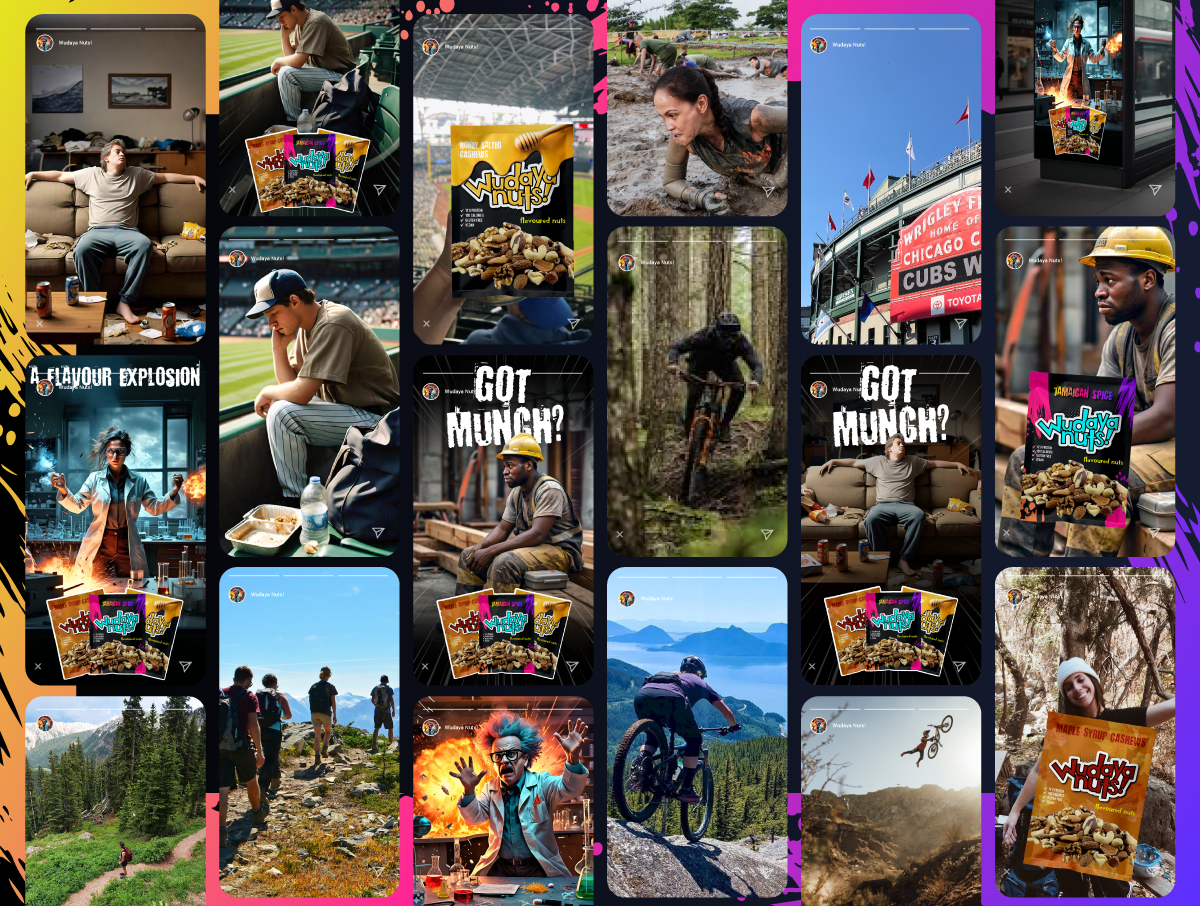
It’s important to note that company values aren’t just something that sits on a PDF and only get passed to new employees, they define what your company is all about. If your employees don’t know the company values, or can’t immediately recite them, then you don’t have core values. Values need to be posted around the office, absorbed, upheld, and act as a filter through which everything passes through.
In our case, we can further define our values and what they mean to our brand:
- Fun: Life is too short to be serious all the time. Our brand is all about bringing joy and laughter through our quirky and humorous approach.
- Adventure: We celebrate the thrill of exploration and the joy of discovering new flavors. Our products are designed for those who seek excitement in every bite.
- Quality: We prioritize high-quality ingredients and ensure that every pack of Wudaya Nuts delivers a delicious and satisfying snacking experience.
- Convenience: Our single packs are perfect for on-the-go snacking, making it easy to enjoy a tasty treat anytime, anywhere.
- Health: We believe in promoting a healthy lifestyle by offering nutritious snack options that fuel your body and mind
We have two slogans:
- “A Flavour Explosion”
- “Got Munch?”

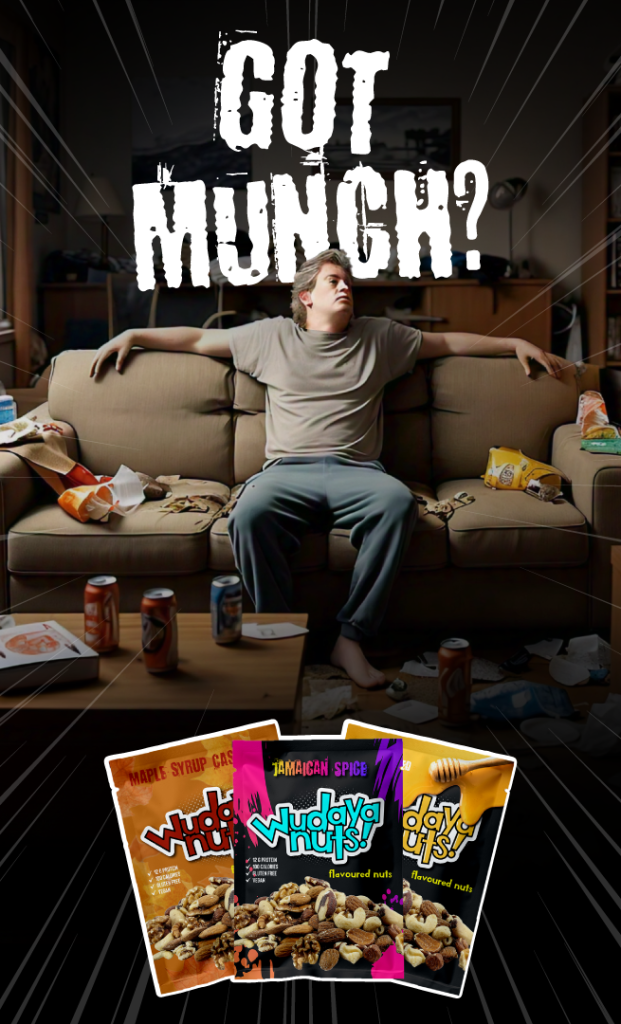

4. Packaging
Given the name, ‘Wudaya Nuts!’ we can tell this is a fun and silly consumer brand, which doesn’t take itself too seriously. Our inspiration when designing the packaging was 90s Saturday morning cartoon commercials. If you were around in the 90s, you would remember some fun and zany commercials geared toward kids (i.e. cereal, toys, snacks…).
As mentioned, our branding and marketing looks nothing like anything currently available. With our funky lettering, fun name, bold design choices, and unique flavours, we are positioned well in the market for consumable snacks that lean more toward the healthy side.
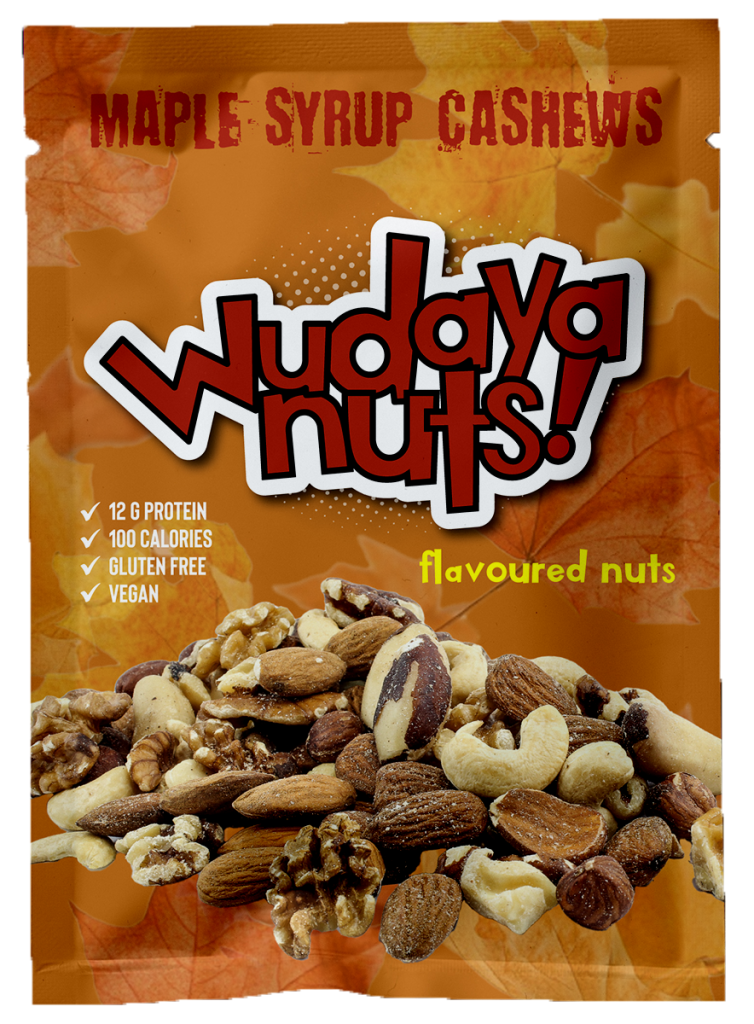
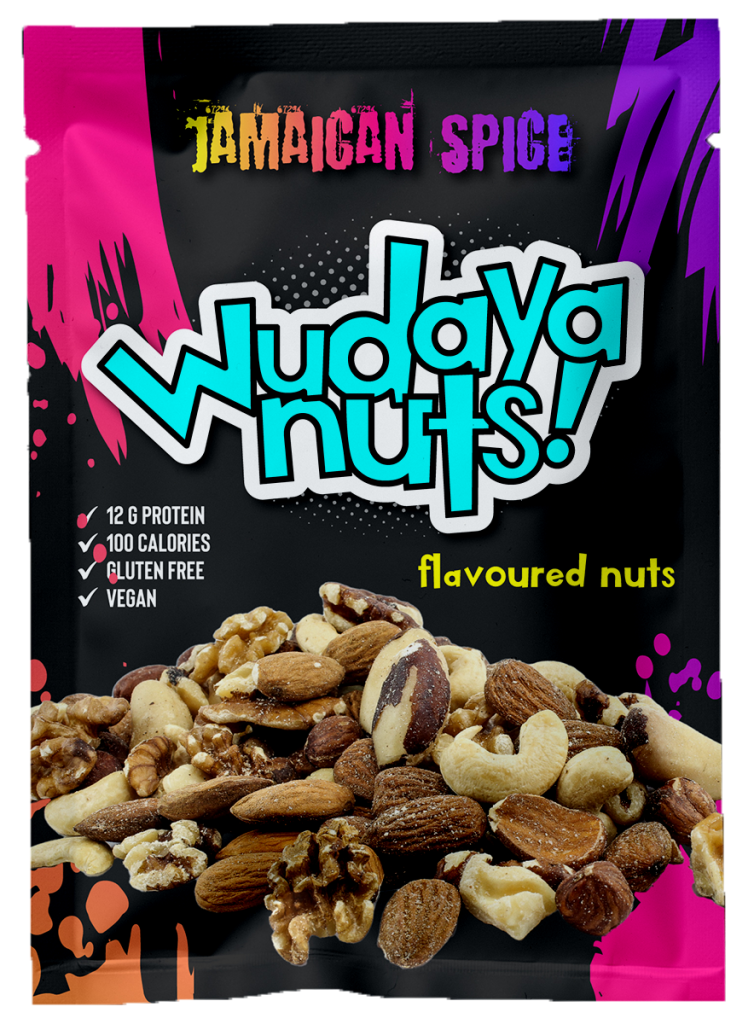
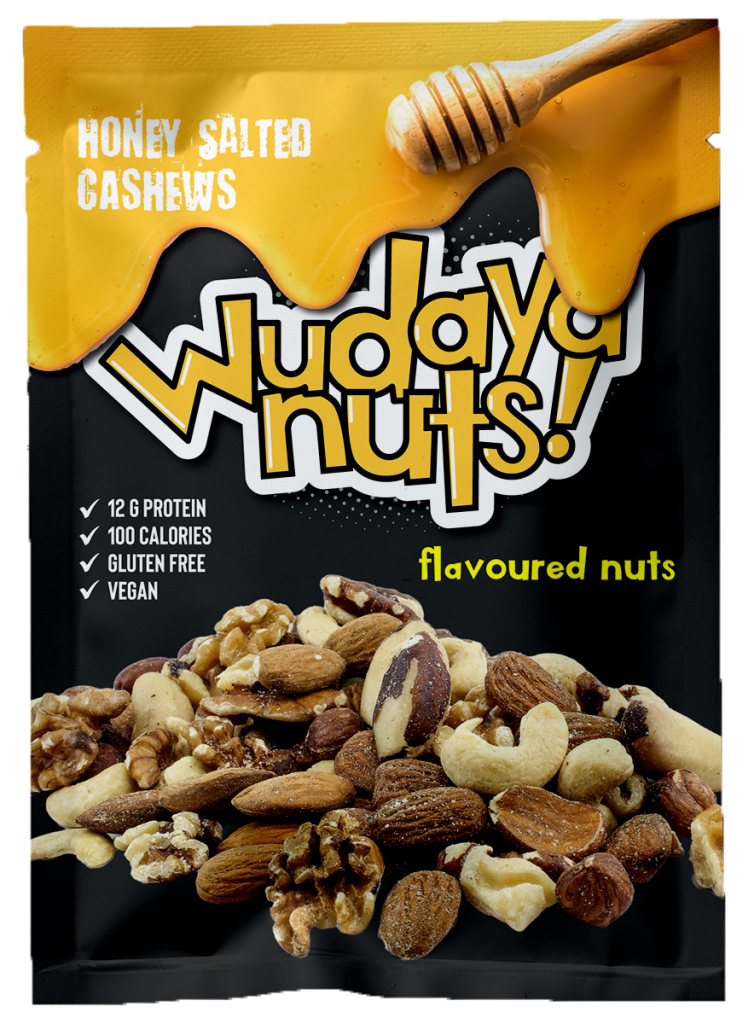
5. Ads
We will use over-the-top or funny imagery to stop people in their tracks and cause them to pay attention. This will help with brand recall (i.e. having a familiarity when you see it on store shelves, or being the ‘go-to’ brand when a consumer thinks flavoured nuts.)
In one campaign, we used the tagline, “A Flavour Explosion” and used AI to create a series of mad scientists working in a lab. The result of their work is a flavour explosion. We could explore this concept further, but also find other ways to highlight the brand story or brand promise that are not tied to flavour.
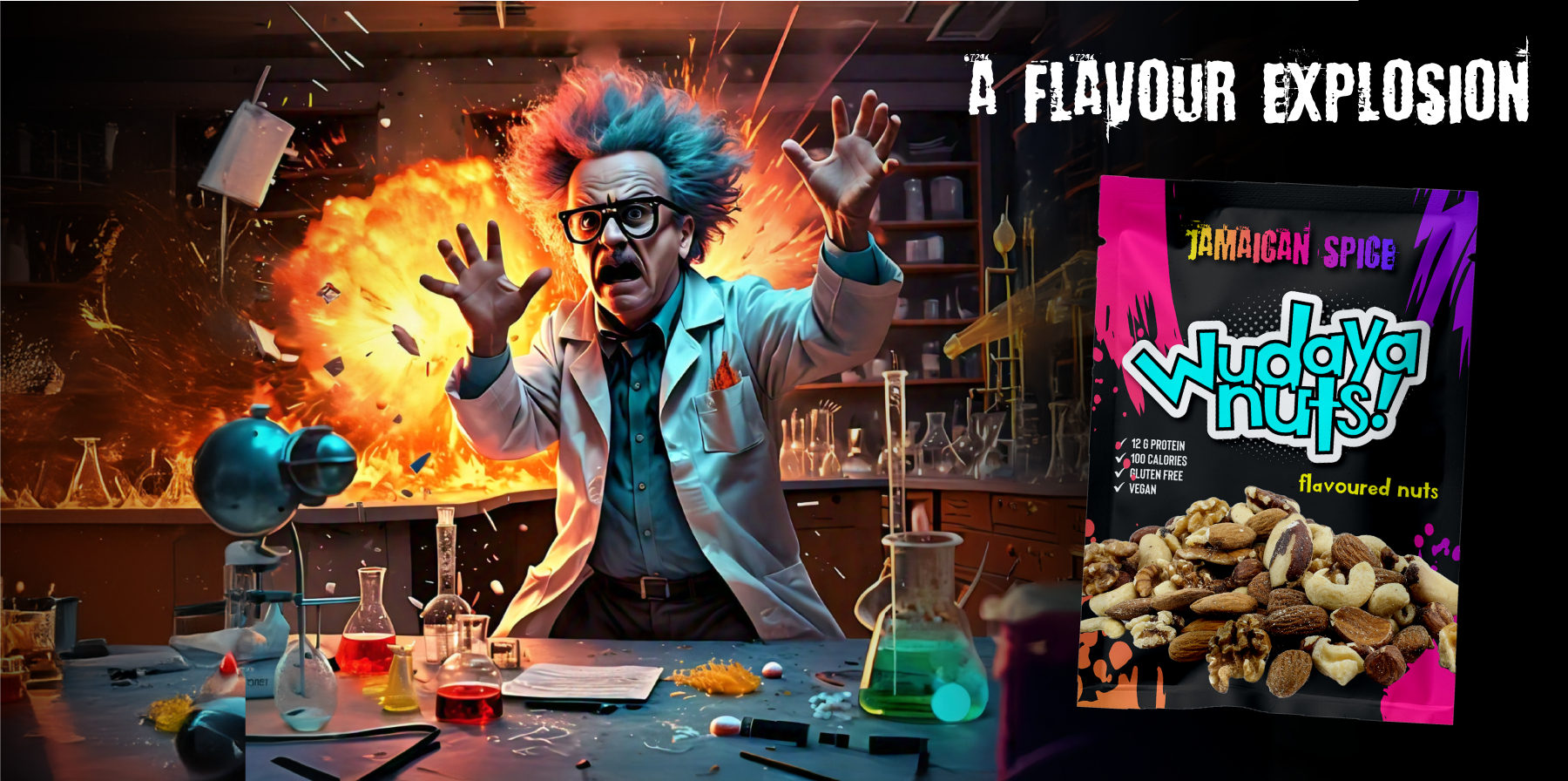
In another campaign, we created a series of ads centered around satisfying your hunger or snack cravings. We call this the ‘Got Munch?’ campaign (a play on the famous ‘Got Milk’ campaign – instead of a milk mustache, we can find scenarios where people tend to have munchies.)
The name, ‘Wudaya Nuts!’ is often associated with gripes with people, places, and things in our society that fall outside of the conventional social norms and make you scratch your head. A person taking up two parking stalls, a parkour athlete scaling the side of a building, a crazy neighbour talking loudly in an elevator… any of these could be ripe for creative ideation.
We could also do a play on the different flavours – so the maple syrup cashews could feature a Canadian enjoying nature.
Whether used in social media ads, print ads, billboards, etc., these ads introduce people to the brand, and serve to further tell our brand story.
Continue reading: What’s the ROI of a Billboard
Wudaya Nuts!: From Concept to Completion
In marketing, standing still means being left behind. We created Wudaya Nuts to disrupt the snacking industry through innovation and creativity. By embracing fun and creativity, we aim to elevate the everyday snacking experience and flavoured nut category.
Building a brand requires more than just a great product; you need a strategy that embraces disruption, creativity, and a deep understanding of consumer values. Through this series, we’ve shown how to apply these principles to create a compelling brand identity, from defining the product and finding a unique name to developing strong branding elements, packaging, and advertising.
Remember, the key to a successful brand is not only in the details but in the overarching vision of disruption and differentiation. We hope this series inspires you to think differently about your own brand and to apply these steps to build something truly remarkable. Whether you are just starting out or looking to reinvigorate an existing brand, the principles of disruption, creativity, and consumer-centric values will guide you toward success.
Stay tuned for more insights and examples as we continue to explore the art, science, and magic of brand building.
Building a Brand Series
Related Posts
If you follow us on social or read our blog, you may have noticed that we talk A LOT about the branding, the importance of branding, how branding is like gravity, how you either have a commodity or a brand…
We also talk a lot about storytelling marketing – in fact we have an entire page dedicated to it as it’s one of our core services. We go on at length about why brands need to tell stories (so that consumers can align their values to the brands they support), and dispelling the myths about storytelling marketing.
We also talk about how consumers don’t buy products, they join tribes. Check out some of our related posts.
Need help with your marketing activities?
If you’re looking to make a move with your marketing, reach out to us. We are priced fairly, we’re straight shooters, and are the very best at what we do.

